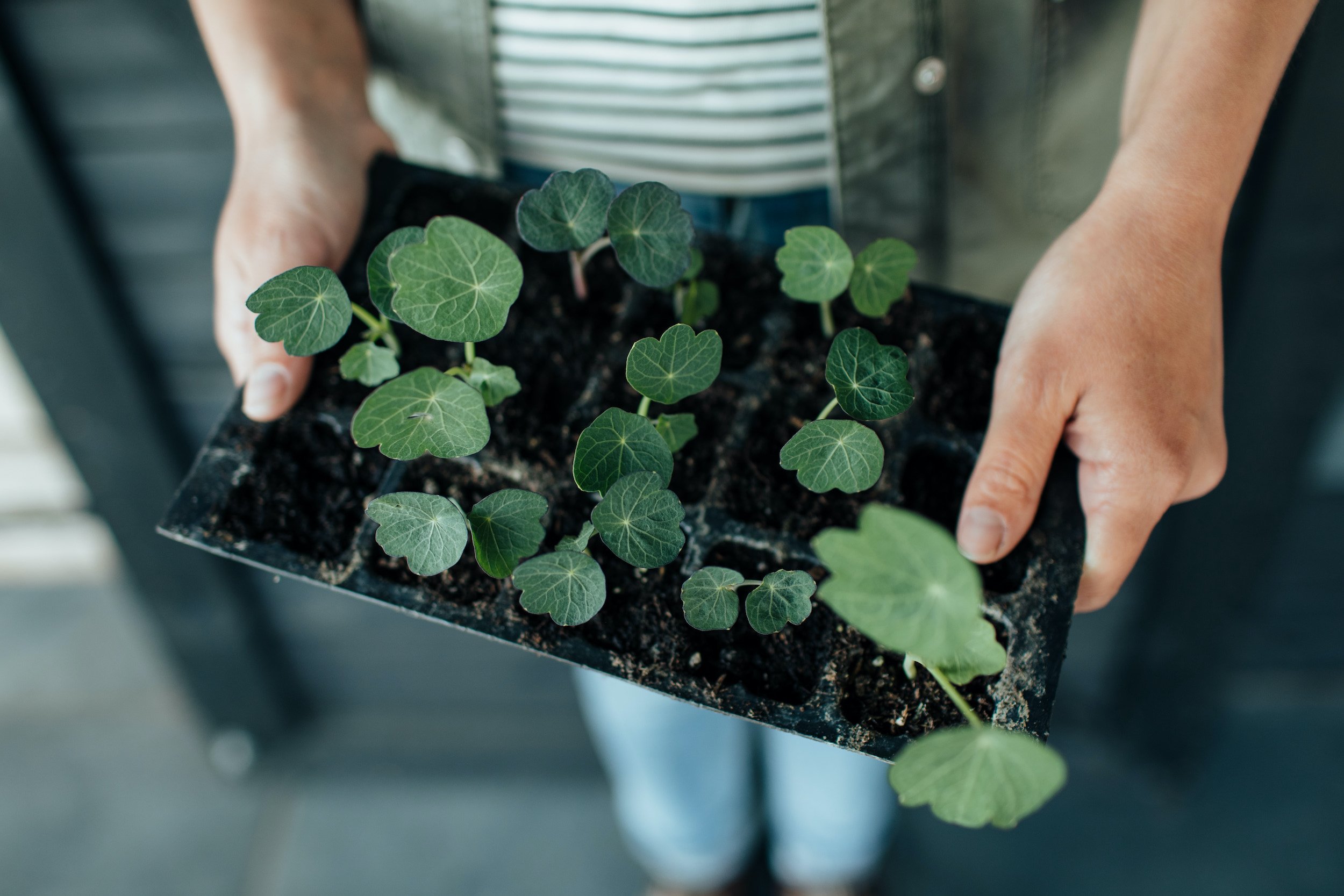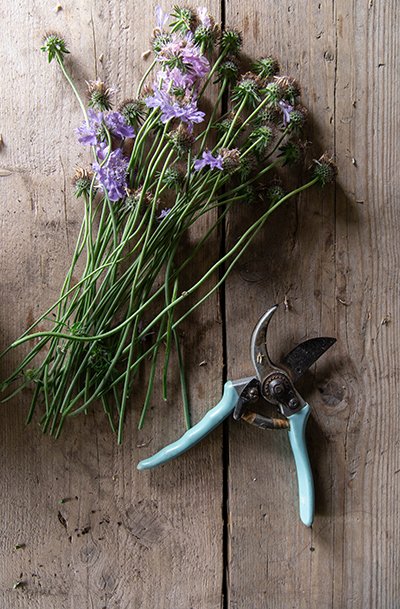Plant guide: Scabious
With nectar for pollinators, seedheads for birds, and beautiful delicate pincushion-shaped flowers bobbing above thin wiry stems, scabious is a perfect seed-grown plant for almost any garden.
One of the most reliable plants to grow from seed, that will happily self-sow if it’s in a spot it enjoys, this gorgeous cottage garden classic is really simple (and cheap) to add to your borders. Flowers come in a range of colours, from the light bright blues, dark purpley-blacks and whites and pinks as well. Sow seed in March, and wait for a display of blooms in the summer…
Botanical name: Scabiosa spp.
The most popular types for the garden are Scabiosa atropurpurea, Scaboisa caucasia and Scabiosa stellata..
Plant type: The most common types of scabious grown in the garden are annuals, or short lived perennials. Though some longer lived perennials are also available. Most of the scabious that are grown from seed are treated as annuals – though in very mild winters some may survive through to the following year. As they self-seed fairly happily, you probably won’t need to replant them in successive years, just keep an eye on any new seedlings and move positions if required.
Scabiosa caucasia
Growing conditions:
Scabious are originally a meadow plant, so they do well in full sun in well-drained soil.
Heights vary depending on the cultivar, so check your seed packet for the final height. Most do well in the front or middle of a border. A few of the larger varieties need staking, or can be grown coming up through more sturdy shrubs, which will support their stems.
How to grow:
Seeds can be sown either in Autumn or early Spring under cover, or direct sown from April or May, after the last frost. See our guide to sowing seeds for more info.
Seeds sown inside can be planted out after the last frost. Scabious tend to germinate well and the seedlings need minimal care, except for regular watering, so they’re a great plant for novice gardeners to get started with.
Care:
Once in the ground, plants need very little care. They’re fairly tolerant of dry spells, and may wilt a bit, but should revive quickly. Water only for extended drought periods.
Flowers can be cut for the vase, and regular cutting will encourage more flowers to grow. Deadhead varieties that are grown only for the flowers, to keep the plant investing its energy into creating more. Some scabious, such as Scabiosa stellata ‘Sternkugel’, are grown for their spectacular seedheads, so leave the spent flowers of these on the plant.
Annual scabious can be cut back hard in the middle of the growing season, to encourage more shoots and fresh flowers. Cut back about a quarter of the plant and it will quickly bloom again.
Scabious can self-seed easily. If you have seedlings popping up in spaces where you don’t want them, they’re very easy to weed out. (We love to leave them in situ, though!)
Grow with:
We particularly enjoy growing scabious alongside grasses, as both have lots of movement and look amazing in the wind. Light, feathery grasses (Stipa tenuissima is always a favourite) look especially good alongside the bobbing flower heads.
Scabious also make a great meadow plant, so can be added to meadow mixes, or for more naturalistic areas of planting.
Uses:
Scabious look beautiful as a cut flower in a vase, though they do have a very short life, once removed from the plant. Since they are prolific at producing blooms, however, and as regular cutting only encourages more flowers to grow, this isn’t much of a problem… You can always just cut more in a few days!
Our favourite varieties:
We really love the wine-coloured flowers of plants like Scabiosa atropurpurea ‘Black Cat’ and ‘Black Knight’. Always striking in the garden, and especially gorgeous in a vase.
Scabiosa stellata ‘Sternkugel’ is a favourite with lots of gardeners for good reason. The distinctive seedheads that form into pompom circles look amazing – perhaps especially so when cut and brought inside, as we’ve found they can get a bit lost in a border.
The classic blue scabious are delicate and elegant. Scabiosa ‘Butterfly Blue’ is long flowering (usually from July through to September) and is especially popular with butterflies.






